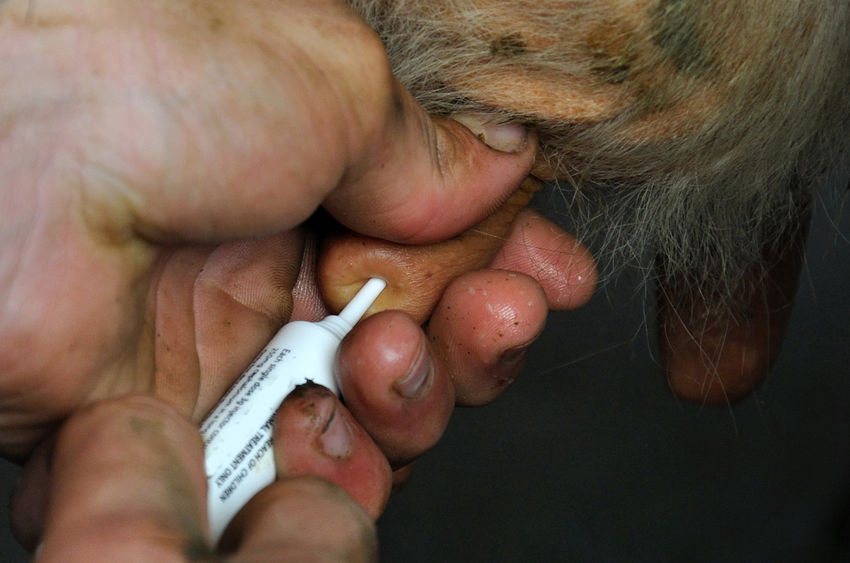
New four-year antibiotic targets for UK farm animals have been set by a task force of leading veterinary professionals and farmers.
The new targets for the responsible use of antibiotics cover ten sectors across aquaculture, pigs, poultry and ruminants.
For the first time, calf rearing is examined in isolation in order to focus in on the specific health and welfare interventions that will reduce the need for antibiotics.
Facilitated by the Responsible Use of Medicines in Agriculture (RUMA), the new goals build on the 'successful implementation' of the last targets released in 2017.
Overall, these have helped to halve sales of antibiotics to treat UK farm animals and achieve the fifth-lowest usage in Europe, with only Nordic countries lower.
According to RUMA's new report released today (18 November), over 75% of the 2017 targets have been achieved early or are on track to be achieved by the December 2020 deadline.
But the time is right to 'reset' some sector's goals with refreshed challenges for the next four years, RUMA chair Cat McLaughlin said, adding that farmers had responded 'extremely well' to the targets.
"Our original aim of lowering overall antibiotic use, and in particular highest-priority critically important antibiotics (HP-CIAs), has been categorically achieved in the face of some challenging external conditions.
“Most sectors are now capturing data on antibiotic use across 90% or more of their sector which has been a key part of the success," Ms McLaughlin said.
“Even where usage data is lacking but good sales data are available, for example in cattle and sheep, sizable reductions have been achieved especially in sales of HP-CIAs.”
However, she said the overall picture in terms of use in the large and diverse cattle and sheep sectors was 'still lacking', a reason why targets for 2024 include the collection of data into the new AHDB Medicine Hub, a UK centralised database for ruminants.
Targets across the ruminant sectors included within the Targets Task Force Report 2020 report also include a focus on disease prevention and herd and flock health planning, with plans to develop a new network of ‘Farm Vet Champions’.
While specific reduction goals have not been set for beef and sheep, there is an aim that dairy and calf rearing will secure reductions in use of 15% and 25% respectively across the national herd by 2024 as data becomes available.
Other sectors aiming to achieve reductions in antibiotic use as a result of farm-level interventions include the pig sector, with plans to decrease by a further 30% by 2024, and gamebirds with a goal to cut back by 40%.
Among other activities, the pig sector is promoting best-practice guidelines to reduce post-weaning diarrhoea, a common cause of antibiotic use, and will be identifying and supporting reductions among any farmers using higher levels of antibiotics within the sector.
Gamebird farmers and vets will be focusing on improved practices, research into disease and farm assurance.
The poultry meat and trout sectors achieved significant reductions in recent years, and join laying hens and salmon in opting to hold their targets at current levels.
Preventative use has been phased out completely in these sectors, meaning many animals receive no antibiotic treatments at all in their lifetime.
However, all four also face new challenges due to changing production systems, disease threat or a warming climate, and will be focusing on managing these effectively through increased vaccine development and availability, surveillance and improved management practices.
Professor Peter Borriello CB, chief executive of the Veterinary Medicine Directorate’s (VMD), welcomed RUMA's report, confirming that the UK livestock sectors had good progress behind them.
“The ambition now outlined in this report, alongside the proactive, holistic approaches and focus on behaviour change principles gives me every confidence that they will once again succeed,” he said.
“We look forward to working with the sectors as we continue on this endeavour, which will ultimately be of benefit to the reputation of the UK livestock sectors as well as helping to protect human and animal health.”
The VMD’s Veterinary Antimicrobial Resistance and Sales Surveillance report shows that UK antibiotic sales for food-producing animals have halved since 2014, when sales were recorded at 62 mg/kg.
However, there was a slight increase from 29.5 mg/kg in 2018 to 31.0 mg/kg in 2019, predominantly due to disease challenges from exceptionally poor weather and novel pathogens.
In an EU report published earlier in 2020, the UK reported some of the best results in reducing incidence of antibiotic resistance among pathogens from farm animal and animal products.
